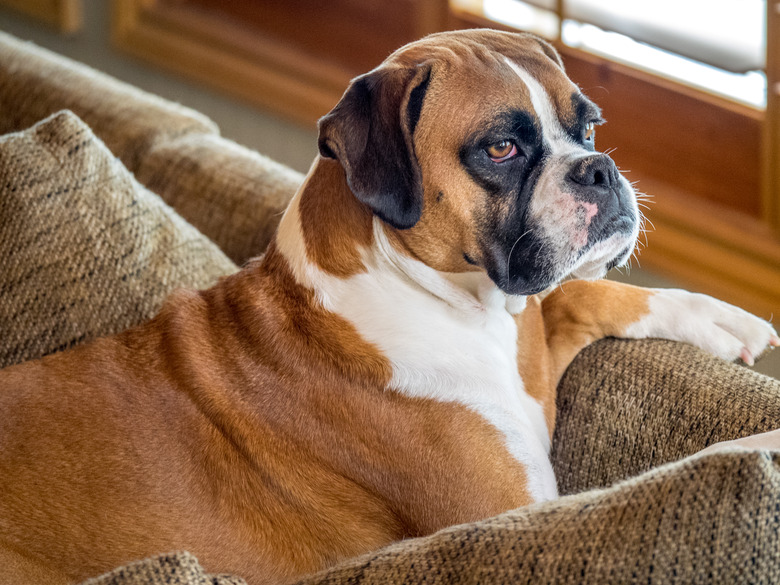American Boxer Dogs Vs. German Boxer Dogs
From their pugnacious, short-nosed faces to the tips of their wagging, cropped tails, boxers exude a rambunctious enthusiasm for life. These high-energy dogs may look fierce, and their name may connote a fighting dog, but most boxers are friendly and not aggressive. Boxers are the 10th most popular breed in the U.S. While there is just one breed of boxer, there are several types of boxer dogs, and their names indicate their home country.
Many common traits
Many common traits
No matter her origins, there's no mistaking a boxer's wrinkled and worried-looking face. These large male dogs stand 23 to 25 inches tall from paw to shoulder. Females are a bit shorter and about 21.5 to 23.5 inches. Males weigh about 65 to 80 pounds, while females are about 15 pounds lighter. The boxer lifespan is about 10 to 12 years.
Their short coats can be fawn, tan, ginger, gold, or brindle with white markings on their faces and paws. A brindle boxer has dark stripes of fur on a lighter-colored coat, and reverse brindle boxers look almost black with just a few stripes of lighter fur.
While boxers are born with floppy ears and long, slender tails, many owners get them cropped if they plan to show their dogs. If ears are cropped, they are pointed and stand up straight, and the tails are docked to just a few inches. However, these practices are now illegal in parts of Europe.
Boxers are affectionate and have a generally friendly temperament. Without training, their enthusiasm for fun and mischief can get the best of them.
A breed born in Germany
A breed born in Germany
Boxers originated in Germany in the late 19th century. The boxer may have been bred from a larger dog known as the Bullenbeisser, which means "bull biter," used for hunting by noblemen. This dog was crossbred with a smaller mastiff-type breed from England and became today's sleeker boxer. The name comes from how the boxer looks like he's sparring with the front paws while playing and when defending himself.
The American Kennel Club first registered the boxer in 1904, and the breed rose to popularity in the U.S. in the 1950s.
American boxer traits
American boxer traits
As boxers became more common in America, they were bred to have a slightly different appearance than boxers in Germany. American boxers have a tighter coat that stretches over their bones. The American boxer's nose and muzzle are wider than the German counterpart. Your breeder will know if you have an American or German boxer.
Bigger-boned German cousins
Bigger-boned German cousins
While the German boxer has a smaller nose, this type of boxer's thighs are a bit wider. Their overall bone size is also larger. Because their coats aren't quite as tight, they can have a somewhat wrinkled appearance all over rather than just their face.
Caring for all types of boxer dogs
Caring for all types of boxer dogs
Unlike dogs with long fur, an occasional brushing is all that's needed to keep a boxer's coat shiny and well groomed. These high-energy dogs do best when walked and played with daily.
Because of its short nose structure, boxers sometimes snore and some drool excessively. Boxers are primarily indoor dogs. They are intolerant of hot weather, but at the same time don't do well for long times outdoors in cold weather because their short coats doesn't keep them warm.
Unlike some larger breeds, boxers are not as prone to hip dysplasia as they age. Cancers most likely to strike boxers are mast cell tumors, lymphoma, and brain tumors. They can also inherit boxer cardiomyopathy, a condition in which the heart can beat erratically. This is hard to diagnose and can cause sudden death.
